The carbine "Manliher-Karkano" is a very average weapon, but its
It happened more than once that instead of buying good weapons abroad, with persistence, worthy of much better use, the state continued to cling to its own nationality. That is, its own, national, albeit bad, is better than foreign, even if good.

Mannicher-Carcano Carabiner M91 / 38 - as you can see, outwardly nothing special.
Here are many Italian armaments "from the same opera," and, in particular, the whole family of Manlicher-Carcano rifles. It all began with a sample of “fucile modello 1891”, that is, the 1891 model of the year (M91), the same age as our Mosino trilinear. Moreover, the German Mauser M1889 served as the basis for its creation, but they worked on it, eventually changing beyond recognition, two people at once: the famous gunsmith Ferdinand Mannlicher and Salvatore Carcano - the chief inspector of the Turin Arms Factory. Thanks to the first, the rifle received the original store, the second created for it both the original bolt and the original fuse. An even more original decision was a pack of six rounds, which was inserted into the rifle magazine along with the cartridges and which fell out of it through a special window in the bottom of the magazine box after the last cartridge was sent to the chamber. This allowed for a higher practical rate of fire in relation to rifles of other systems. In addition, this pack had six rounds of ammunition, whereas the rifles of all the other fighting armies had five, and the French rifle Berthier originally only had three. Replacing the outdated Wetterly rifles of the 1871 / 72 model and the Wetterly-Vitali models of the 1871 / 87 model, which had a caliber 10,4 mm, were planned to replace the rifle.
Since a lot of weapons depend on the cartridge, the Italians thought about it first of all, as a result of which Italy was among the first countries that received 6,5 mm caliber cartridges for their small arms. Then it spread to Japan, Sweden, Norway, Holland, Portugal and Romania, as well as to Greece.
Meanwhile, the experience of the First World War clearly demonstrated that infantry rifles are too long. Therefore, between the two world wars, many countries of the world began to adopt modernized models of old weapons, mainly characterized by reduced length, into service with their infantry. So from the experience of the First World War, the Manlikher-Karkano carbine of the 1891 / 24 model of the year was created, which differed from the M91T.S model with a constant sight on the 300 m, which replaced the sector on the range to 1500 m.
It turned out also the low efficiency of the cartridge 6,5x52. As in Ethiopia in 1935 – 1936, and in Spain, with the 1936 of the year, this cartridge showed itself not with the best hand. And then in 1937, the Italian army decided to rearm with a rifle chambered for the new caliber 7,35x51. As it happens with the army very often, the most important condition for the technical task was to ensure the minimum cost of rearmament. At the same time, work on the cartridge and on the rifle was conducted in parallel. The result was the M38 Mannisher-Carcano rifle and the M38 and M38T.S two Mannisher-Carcano carbines. In addition to the new caliber, simplified sight and the arrangement of the swivels, they did not differ much from the previous models.
In the design of the rifle and carbine, the Italians abandoned the progressively sophisticated cutting in the bore of the barrel, leaving a constant groove pitch in 254 mm. Nevertheless, in general, the rifle had relatively high characteristics: the length was equal to 1020 mm, the barrel length - 538 mm, weight - 3400 g, with a magazine capacity of six rounds. Under the designation "Manliher-Carcano" M91 / 38, a new rifle was also launched under the old 6,5x52 cartridge. But then Italy entered the Second World War, which did not allow it to either completely re-equip the army, nor provide the ammunition with enough new caliber.
The shutter and sight. Everything is very simple and, in general, reliable.
And if so, in order to avoid problems with the delivery of two types of cartridges to the troops at the same time, it was decided to withdraw all 7,35 mm rifles from the army. At the same time, it was decided to launch the production of old 6,5 mm rifles, which were designated as “Manliher-Carcano” M91 / 41. Some sources try to explain this decision by the unsatisfactory ballistics of 6,5 caliber bullets when shooting with the new Mannichar-Carkano M91 / 38 rifle, the barrel length of which was originally designed for the 7,35X51 cartridge. It is also argued that the trunk in this case should have a length of at least 780 mm. That is, just the barrel of the rifle "Manliher-Carcano" M91 / 41. It is believed that the sight on the 300 m did not allow to realize all the possibilities of a more powerful cartridge at a range of applications, so the Mannicher-Carcano M91 / 41 was again set a variable sight, which allowed to shoot up to 1000 m.
The Manlicher-Carcano M91 / 41 was produced by armories in Terni and in Cremona, where, during the war years, around 820 thousands of rifles were launched. The peak of their production fell on 1942 year. On rifles from Terni in 1941-43 on the top of the chamber there was a stamp with the abbreviation FAT, a royal crown and two numbers indicating the year of manufacture. Later, he also began to put a stamp of military acceptance, which had the appearance of a five-pointed star, that is, a symbol of the Republic of Italy. Interestingly, this rifle was produced in Terni until 1953, and then kept for a long time in the warehouses of the Italian army.
Barrel and muzzle end.
To enhance the effectiveness of the fire of the Italian infantry, in 1939, the Mannicher-Carcano carbine M91 / 24 TS was put into service, which was paired with the M1928 mortar grenade launcher. Rifle grenades from this mortar could shoot at a distance of 400-500 m. And for throwing grenades it was necessary to remove its bolt and ... then rearrange it to this mortar.
The last change to the caliber of the Italian rifle and carbines took place in 1944, when Northern Italy was occupied by the Germans. They began to produce Italian weapons under their German cartridge 7,92x57, and produced it until the spring 1945 year.
Surprisingly, Italy itself, possessing, in general, a powerful industrial potential, not only failed to adopt modern models of small arms, including semi-automatic ones, but was not even able to organize the production of rifles and new 7,35 mm caliber cartridges.
Carabiner with open bolt.
What did the M91 / 38 carbine "Manliher-Carcano" look like, which became practically the main weapon of the Italian infantry during the Second World War? The shutter of the traditional design, longitudinally sliding, turning to the right when locked, having two symmetrical protrusions on the stem. The percussion mechanism was of the shock type and is located in the stem of the gate. Flap non-automatic fuse had a very simple device in the form of a clutch with a "flag", having a grooved notch, located on the back of the bolt. To put it in the "fire" position, it was necessary to move the flag forward and then turn right-down. To put the carbine on the fuse, the flag had to be raised up. At the same time, he very clearly blocked the line of sight, so whether he was ready for battle could be determined very easily. The cartridge pack latch was in the front of the trigger guard: after pressing it, the pack, along with the remaining cartridges, was thrown out by the feeder from the magazine up through the window in the receiver.
The shutter is open, well visible feeder cartridges.
There were carbines that had a shortened box and a curved bolt handle: the cavalry M91, which had a hinged needle bayonet under the barrel, and M91T.S. (for special units), which was used by engineers, gunners and signalmen. The length of both of them was 920 mm, both of which had an aiming range in 1500 m. The carbines got progressive cutting of the barrel, the pitch of which gradually decreased from 485 to 210 mm.
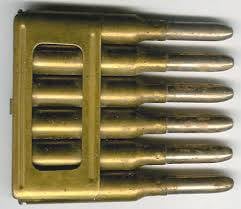
A pack of cartridges for "Manlicher-Carcano." By the way, one of the reasons why Manlichera’s pack was abandoned in the same Russian imperial army was its ... weight greater than the weight of the Nagant cage. Of course, the score went on grams. But these grams, multiplied by the many millions of lost packs and clips, turned into thousands of tons of high-quality metal, which had to be smelted, processed, transferred and transferred to fighters in positions. The clips were much easier ...
Manneher-Carcano carbine performance characteristics M91 / 38
Patron: 7,35x51 Italian M.38
Full length: 1021 mm
Barrel length: 530 mm
Weight: 3,40 kg
Grooves: 4 right
Store capacity: 6 cartridges
"Plump" he is in his hands, "plump." It is even visible in the photo on the girth. Is it possible that poor quality wood was used?
Personal impressions of the carbine. Short, in general, convenient, but as if some kind of "unfinished", as if coming out of a village forge, and not from a modern arms factory. There is neither the elegance of the hard drive, nor the simplicity of the remington, nor the absolute simplicity of the Mauser. In comparison with the Moscow carbine, the “tree” on it is some kind of “plump”, and the store still seems too prominent for such a number of cartridges. That is, with him, of course, you can fight, you can shoot out of it and you can kill people too, but personally I (if I had the opportunity to choose) would choose something else. Some he is not very fancy ...
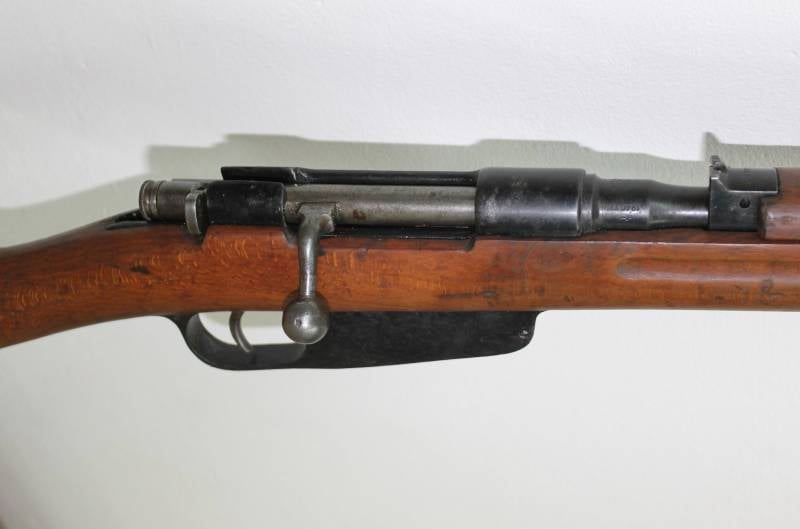
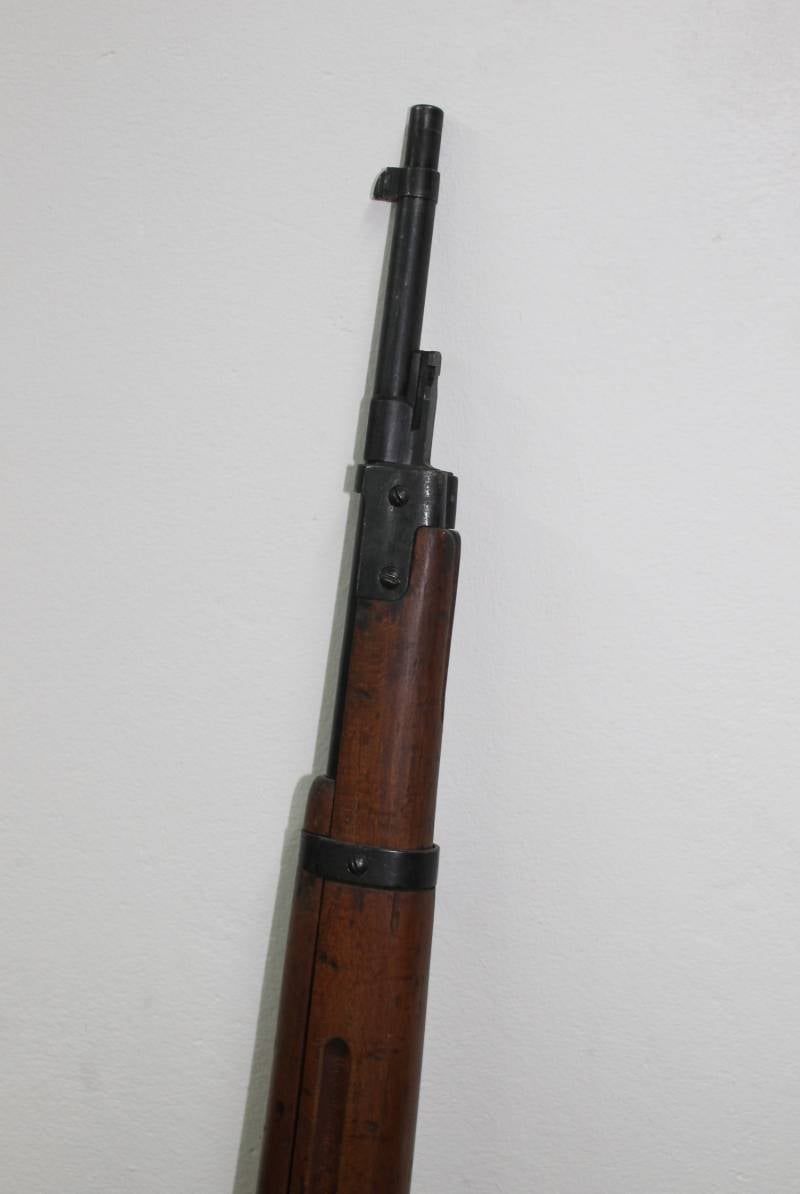
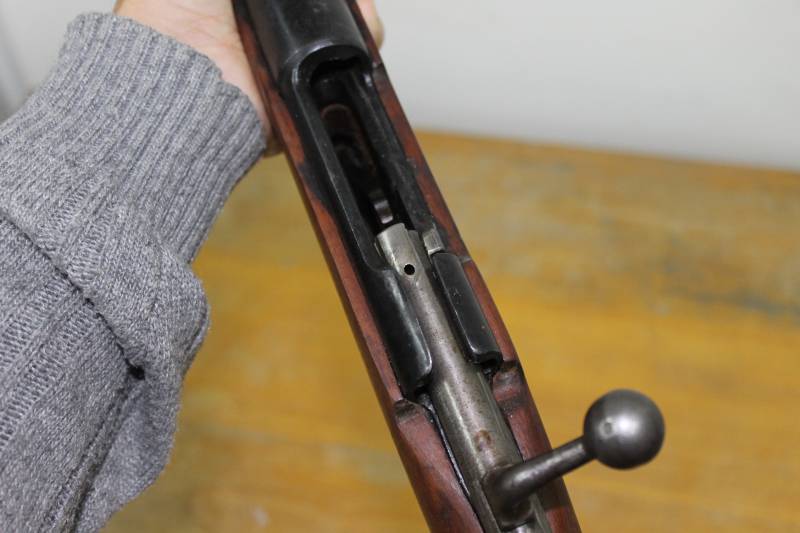
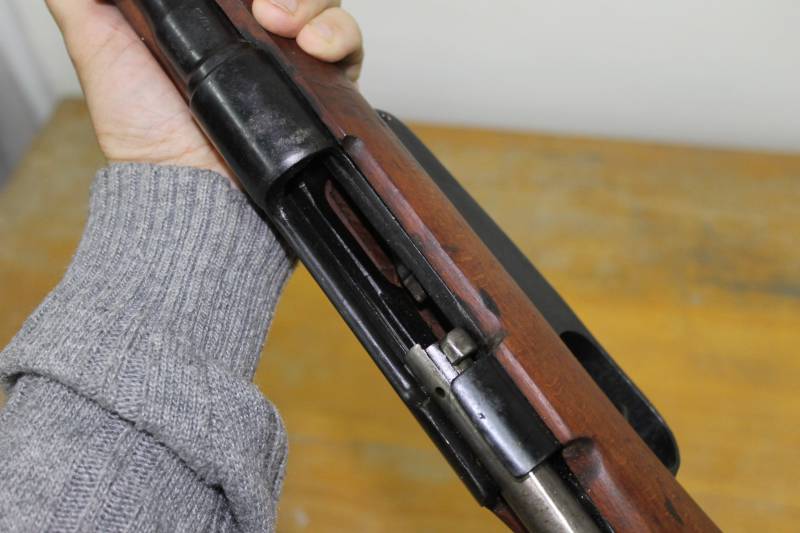
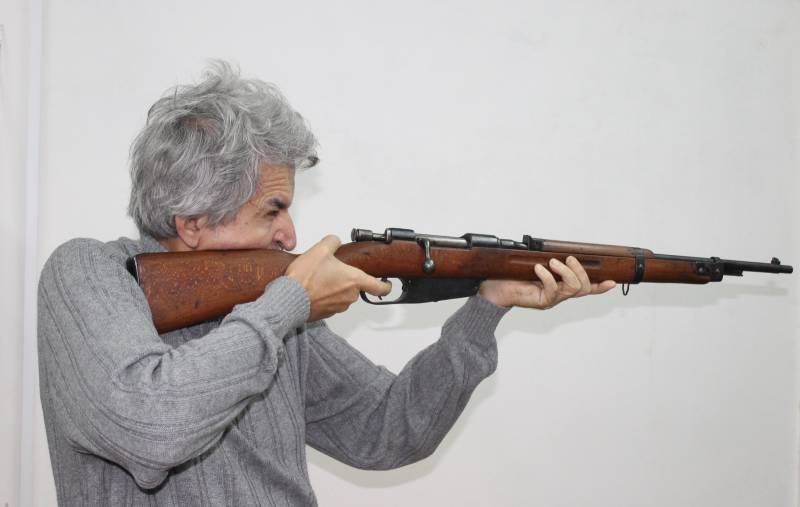
Information